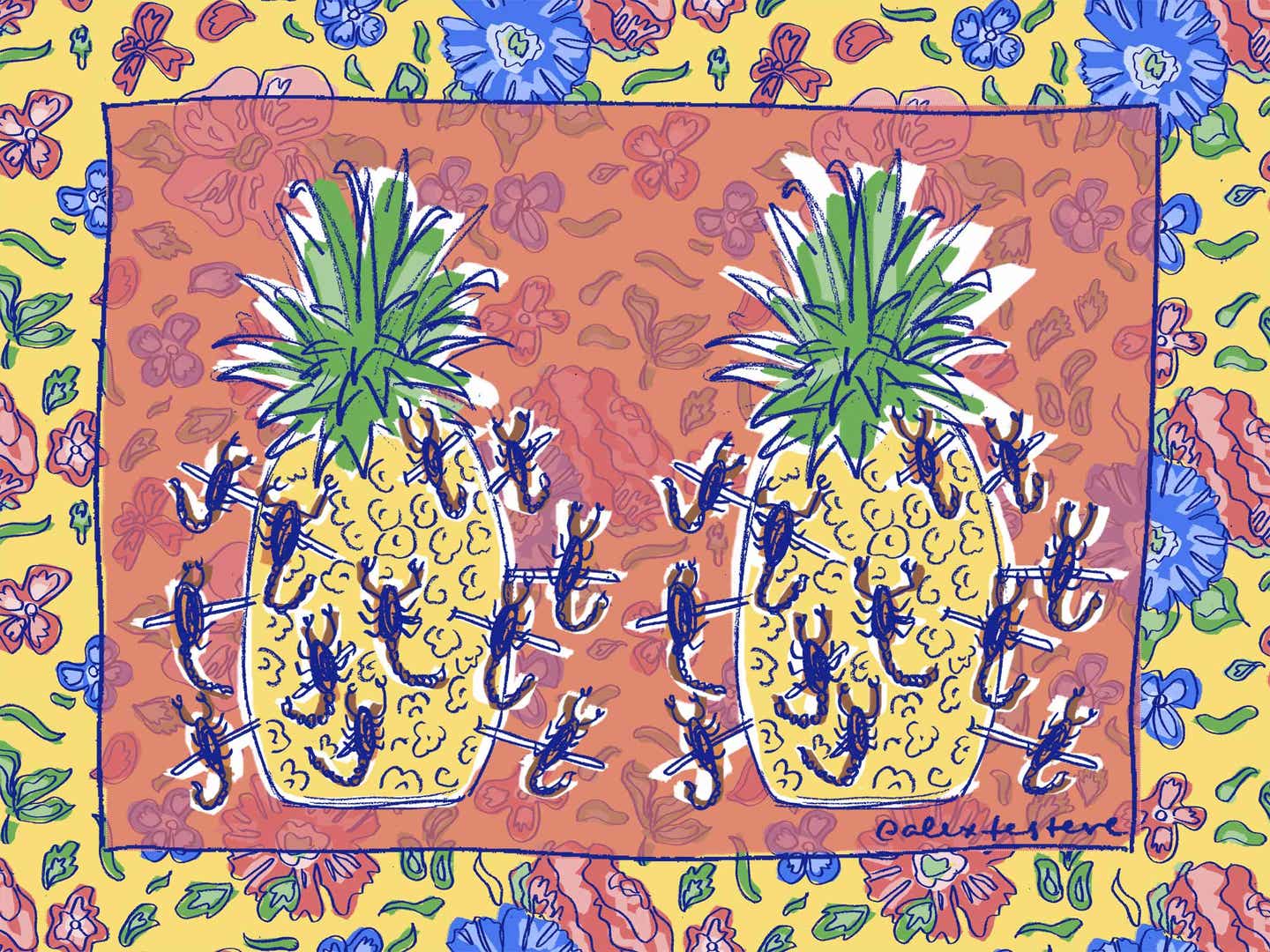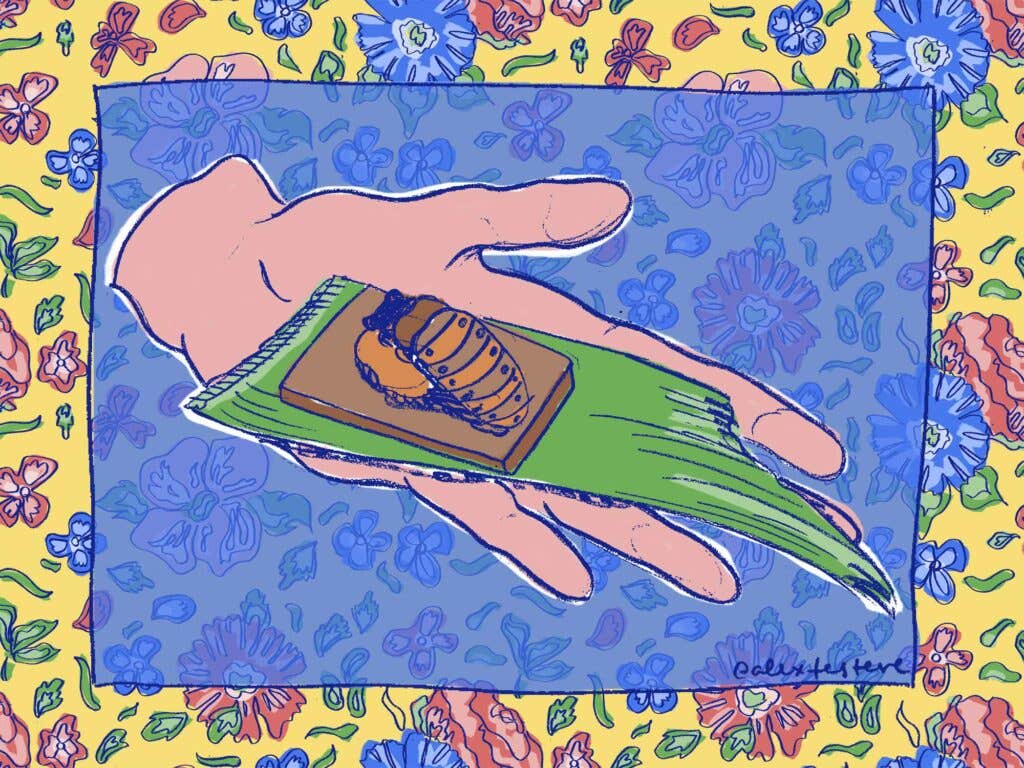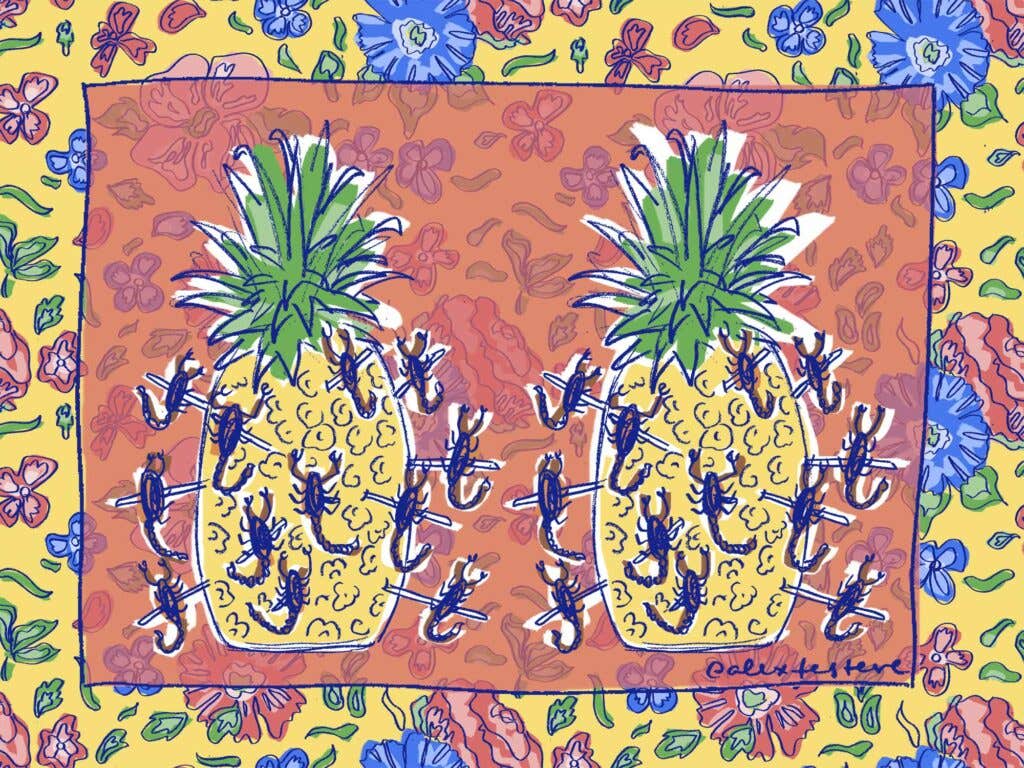
The Cockroach Truffles and Scorpion Canapes of Mexico’s Insect Food Festival
Mexico City’s Festín de Insectos Comestibles is set on changing your ideas about entomophagy

Draped atop a slab of milk chocolate, the two-inch-long Madagascar hissing cockroach looks almost elegant, its lacquered exoskeleton reflecting the thin light of a Mexico City afternoon.
“We recommend eating the roach on its own first, to savor the flavor,” says Isaac Sandoval, a vendor at the city’s third Festín de Insectos Comestibles (Edible Insect Festival). As I contemplate just how adventurous I’m feeling this afternoon, Sara Diosdado, a fellow novice entomophagist, beats me to the punch.
“I’m not afraid,” she says, lifting the bug to her mouth and sinking her teeth into its crackly body. It takes her a few attempts to chew all the way through.
“It’s not…bad,” she reports, dislodging a bit of shell from her teeth. “It’s a flavor I’ve never tasted before.”
Diosdado isn’t the only one experiencing entomophagy—or eating insects—for the first time today. More than five thousand people visited the festival over the course of the weekend, eager to sample (or just gawk at) dishes like mosquito-egg tacos, tlayudas topped with roasted maguey worms and bonbons garnished with crispy beetles.
“Interest in insects has grown in the last few years,” says Daniel Monragon, whose chocolate shop, Xbalanque, created the beetle bonbon. “We don’t hear ‘ew, gross,’ as much anymore. It’s fashionable, just like mezcal.”
Restaurants around the city now advertise the arrival of "bug season," and chefs like Enrique Olvera serve ants and their eggs on their high-end tasting menus. At René Redzepi's much-anticipated pop-up restaurant in Tulum this month, insects may well be featured at the $600-a-head event.
More than 500 species of worms, ants, beetles, fly larvae and other insects have been part of the Mesoamerican diet for centuries, recorded as far back as the 16th century in the Florentine Codex. But in 21st-century Mexico City, eating bugs is still something of a novelty for many, including me and the two friends I recruited to help me eat my way through the festival.

Our first stop is at a stand selling scorpions for 60 pesos each, their semi-transparent bodies impaled on toothpicks stuck into a pineapple. They’re chewy and taste faintly of shrimp and herbs, flavors apparently absorbed from their watery environment.
The stand with the longest lines is the one selling tlayudas, a large tostada spread with beans, cheese, and other toppings that’s sometimes described as Oaxacan pizza. These tlayudas are garnished, of course, with all kinds of toasted bugs: fat and skinny worms, chicatana ants, beetles, crickets, and maguey snails. We opt for a standalone insect sampler and head for the picnic tables, stopping along the way to pick up a gourd full of pulque, a viscous pre-Hispanic drink made from fermented maguey sap.
Most of the insects share a common basic flavor: salty, earthy, minerally. We get hints of chicken liver off the larger maguey worm, roughly the size of an index finger, while the smaller worm is redolent of chicharrón. The maguey snails, like escargot, taste mushroomy, and we all agree the chicatana ants are our favorite. About the size of a pea and resembling beetles more than ants, they deliver the crunchy-salty satisfaction of popcorn.
At another stand, I meet vendor Elia Buendia, who holds up a plastic bag full of what looks like fine-grained sand and explains that it's actually hueva de ahuahutle, or mosquito eggs. The tiny larvae are mixed with oil, made into a kind of mushy cake, doused with salsa verde, and served on tortillas, but it's hard to discern their flavor underneath the bold salsa.
“We’re doing our part to prevent chikungunya,” Buendia jokes, for probably the 100th time that day.
Another crowd pleaser is the cocopache, a pretty black-and-red spotted beetle a little over an inch long. I try it first at Xbalanque, where Monragon explains that its woody flavor makes it a natural match for chocolate, and again at Cal y Maiz, where it’s being served on blue corn chips with a salsa made from mamey fruit and ground-up cocopaches. Here it’s crunchy and tastes delicious—flavored with garlic and the beetle’s own natural oils—and not at all “buggy.”
“These ancestral food traditions like insects and corn—they aren’t new,” explains Cal y Maiz’s Victor Urbano. “They’re only new to our modern culture.”

Nearby, some kids in their 20s are hovering over a tlayuda, framing the perfect Instagram snap on their iPhones. Next to them sit three women a generation older. For them, edible insects are old hat.
“I come from a family that had that pre-Hispanic tradition of eating insects,” says Georgina Martinez, 57, who grew up in Cuautitlán in the nearby State of Mexico. Sipping pulque out of a plastic cup, she suspects the current edible-insect boom is a reaction against a half century of denigrating Mexican traditions while fetishizing all things foreign.
“It’s the same thing that happened with pulque and mezcal,” Martinez says. “Ever since the ‘60s, when beer came in, they said pulque was bad and dirty, that they put excrement in it to ferment it. In my house, we had a pitcher of pulque on the table all the time. My mom said, ‘you really think we’d be drinking something that was made with shit?’ It was the same with insects. People said they’re ugly to look at, ‘how are you going to eat something that lives in the dirt?’ It was this racist campaign to scorn the traditional and impose commercial foods.”
“Racist and classist,” echoes Elizabeth Garcia, 54, as the other two nod in agreement.
Now, though, the tide seems to have shifted. Vendors say people are reacting positively, curious about how the bugs are foraged and prepared, and ready to pay good money for the privilege of eating them. Even the chocolate cockroaches do better than anticipated, the batch of 400 selling out over the four-day event. More than one person I meet refers to insects as "the food of the future," echoing a campaign by the UN's Food and Agriculture Organization to promote entomophagy as a sustainable protein source worldwide.
For event organizer Enrique Cervantes, the festival offers a chance to recognize the folk wisdom of women from the campo, whose gastronomical knowledge didn’t come from studying at a fancy school but was passed down generationally.
“Why did they decide to try insects? How do they know which can be eaten?” he wonders. “It surprised me to learn that chicatanas, for example, only come out in the rainy season, and the abuelas knew when it was time. It used to be a family tradition to go out and collect them. People used to observe their environment, listen to it, contemplate it. We don’t do that anymore.”
Will eating insects make a comeback as the world continues its love affair with Mexican gastronomy? Cervantes, for one, is banking on it.
“People are fascinated with everything that Mexico produces,” he says. “In Mexico, Mexico is trendy again.”
Maya Kroth is a freelance writer based in Mexico City.
Keep Reading
Continue to Next Story










